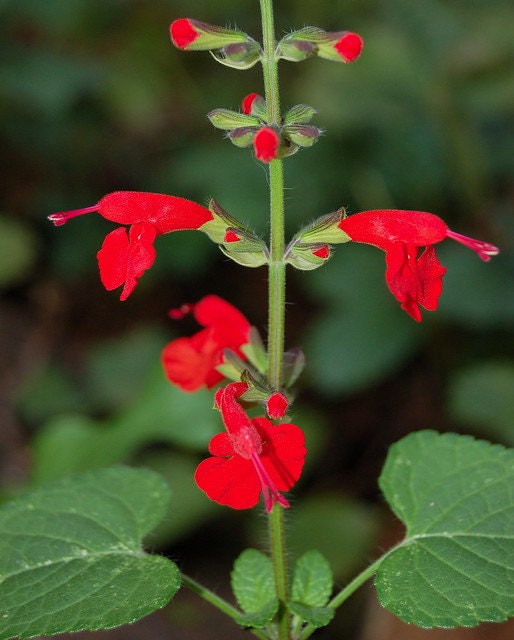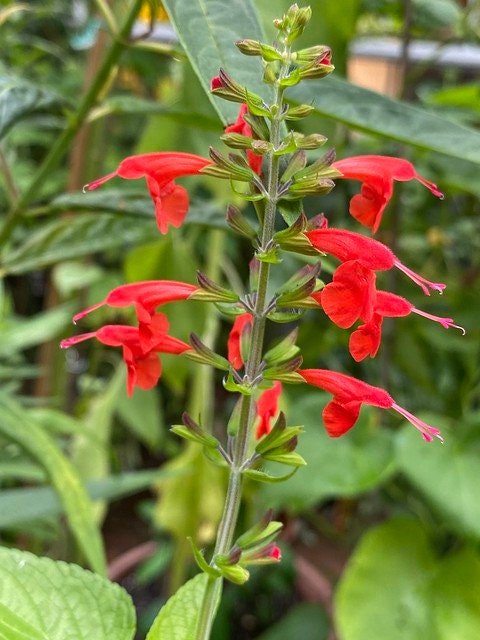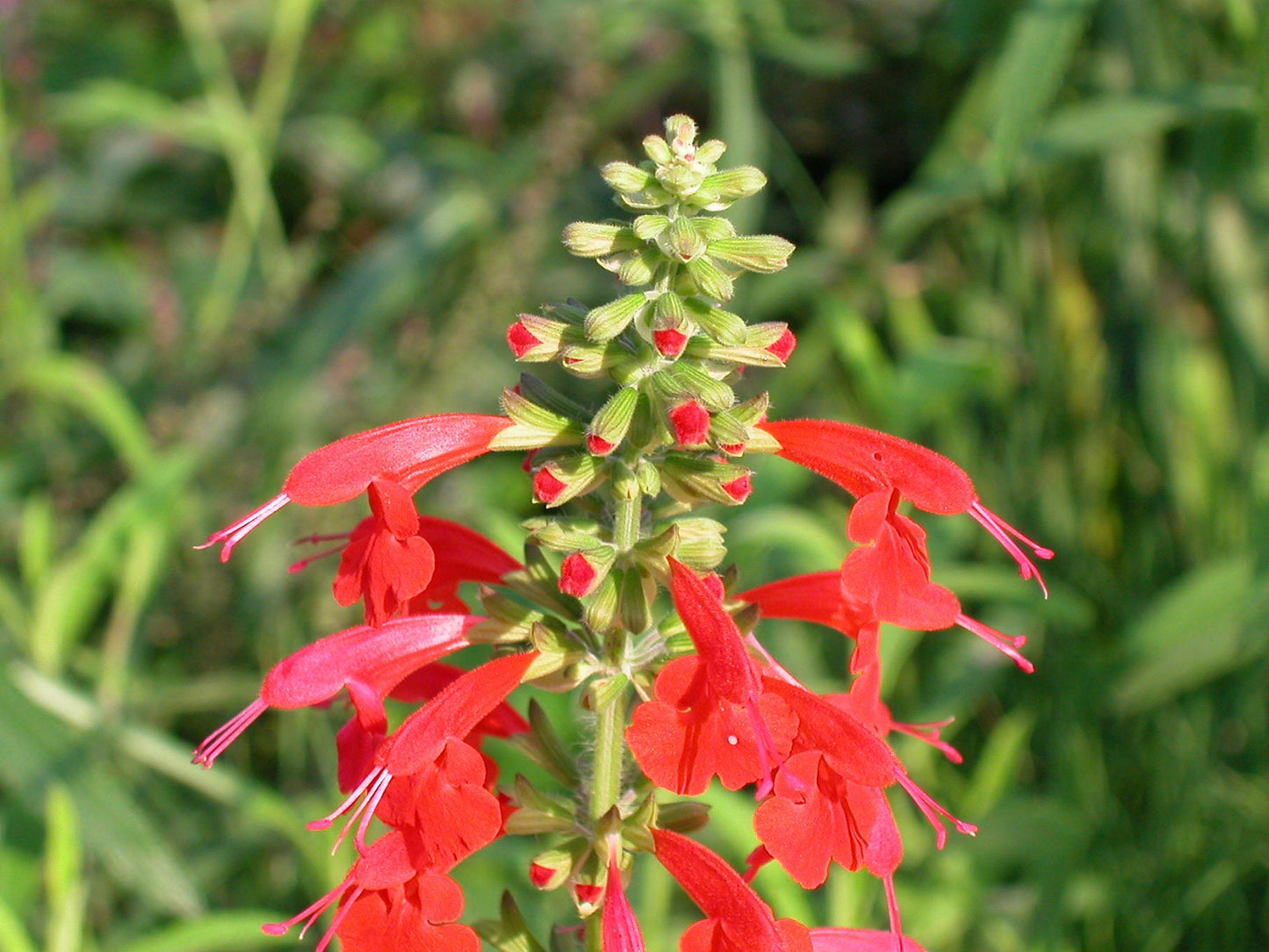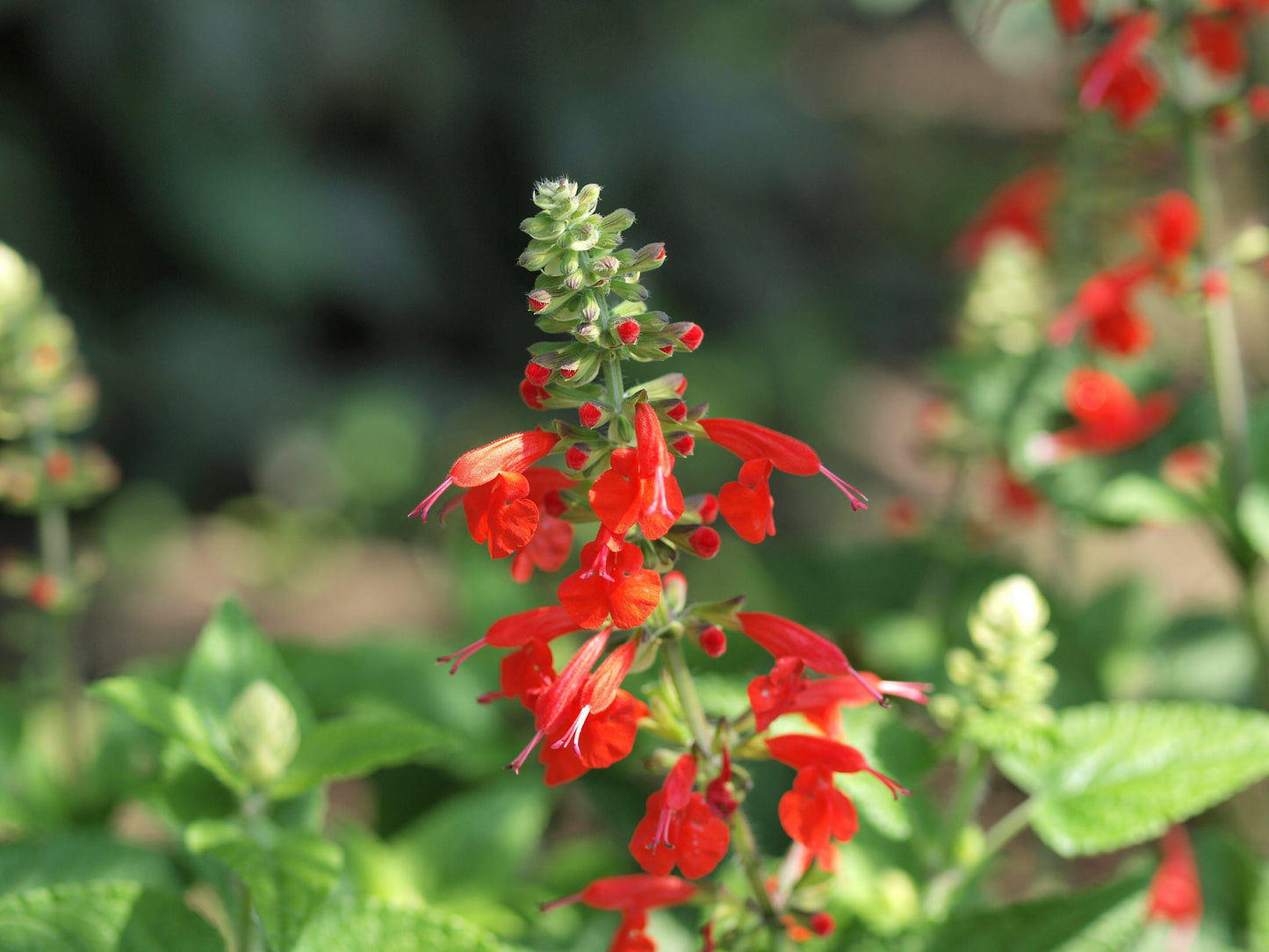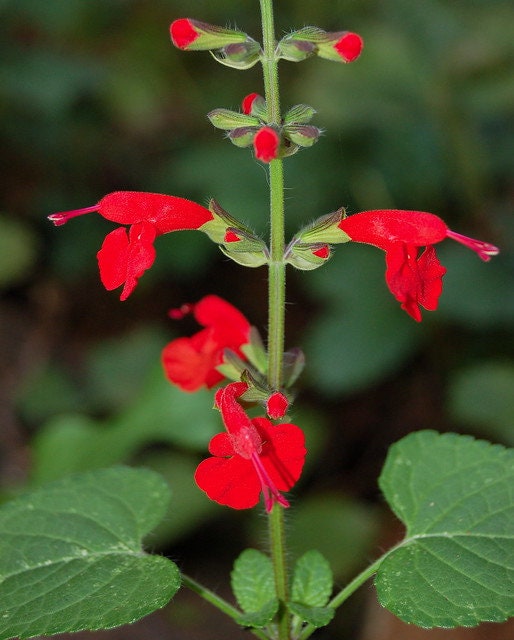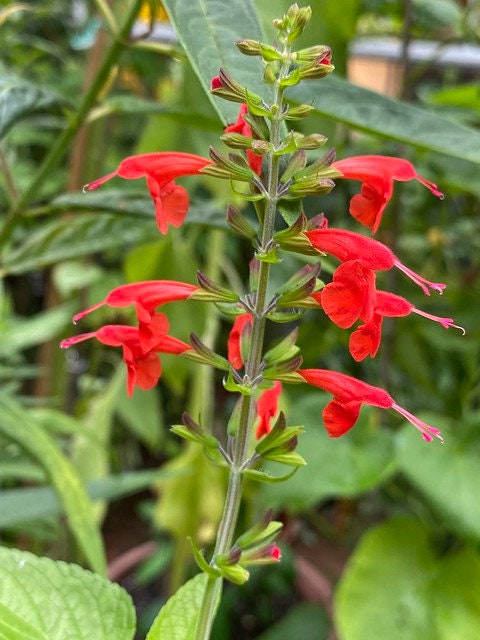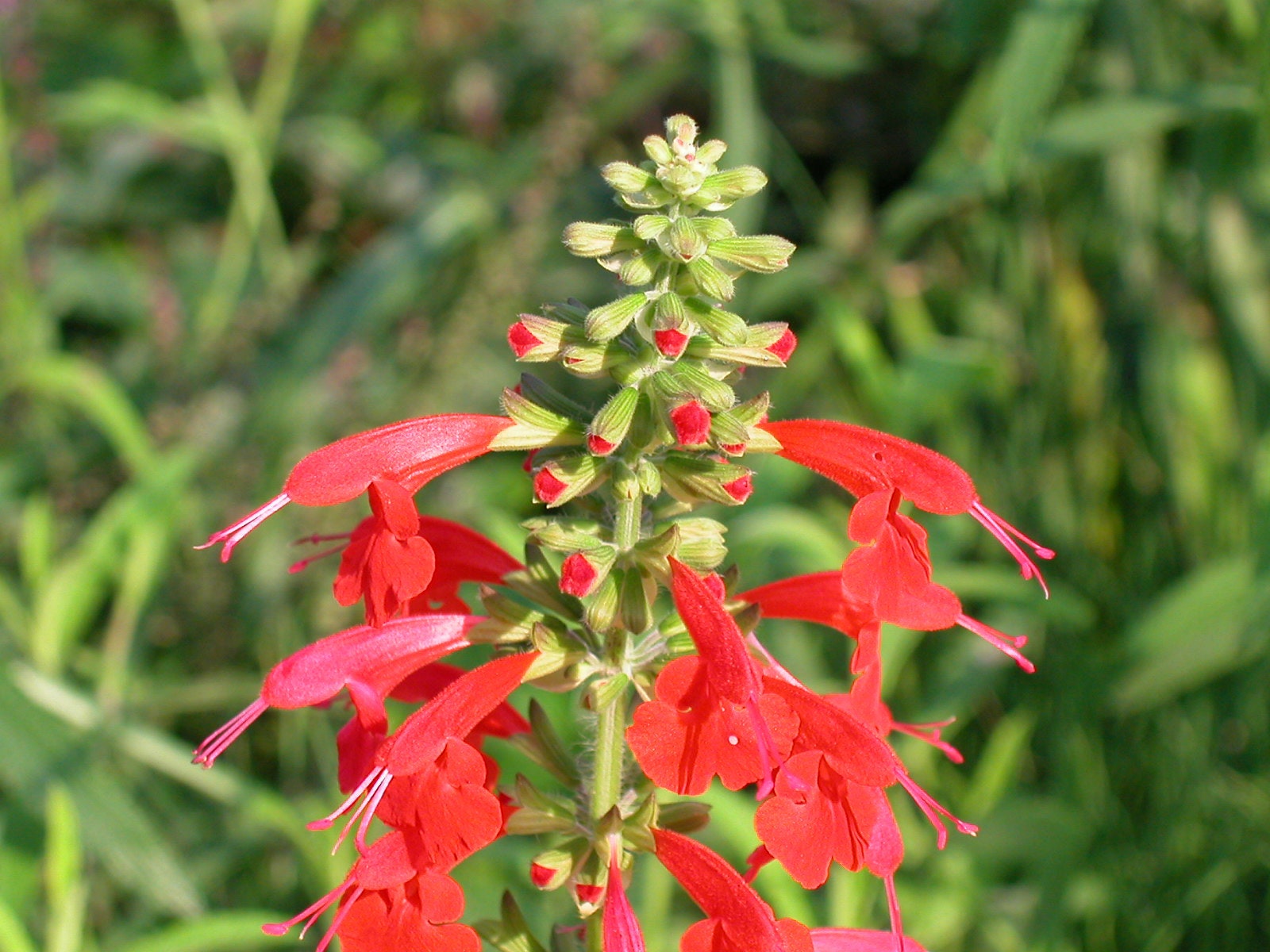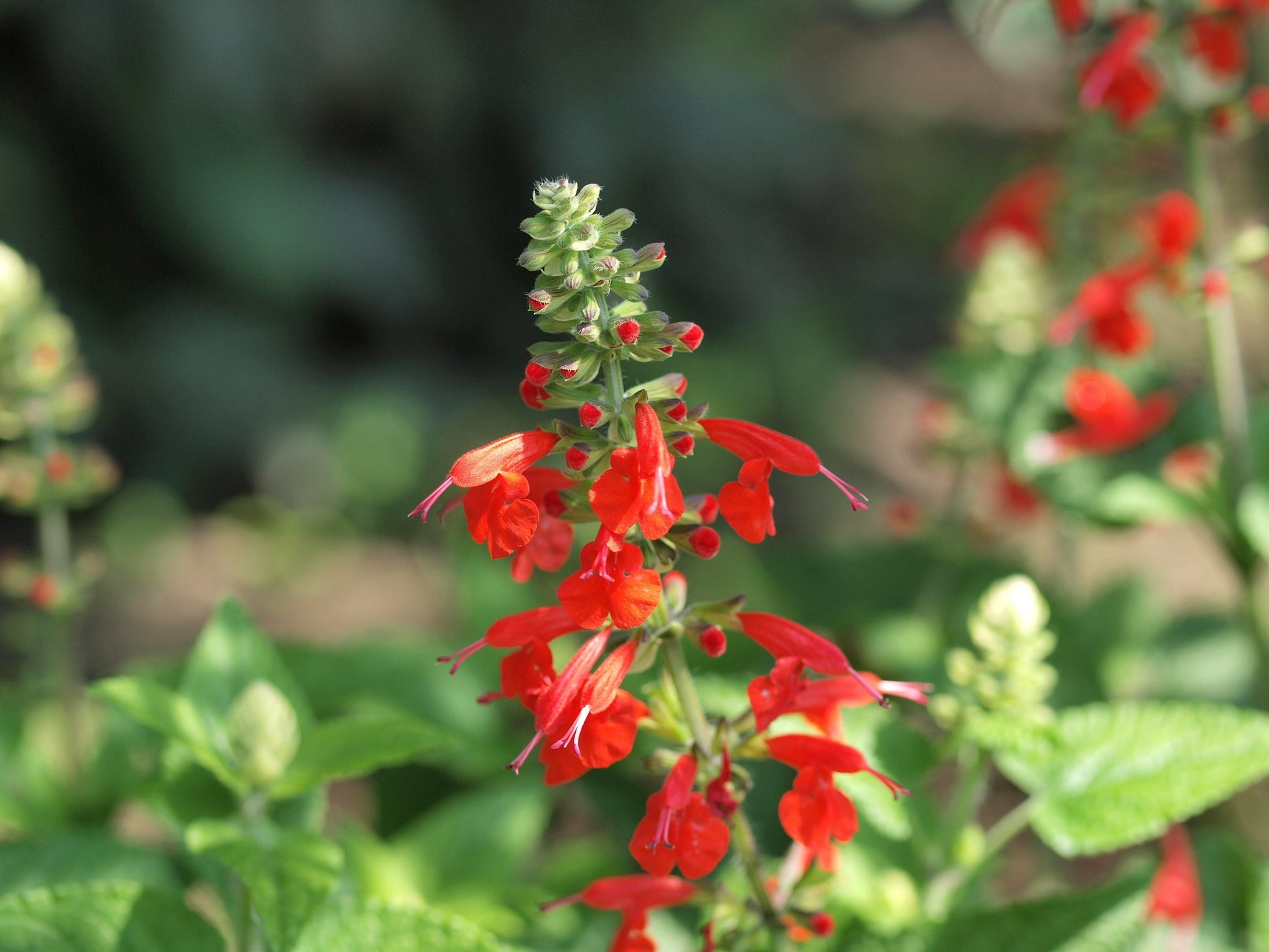R&B Floridaseeds
Scarlet Sage 50 Seeds Salvia coccinea USA Company
Scarlet Sage 50 Seeds Salvia coccinea USA Company
Couldn't load pickup availability
Scarlet Sage, also known as Salvia coccinea, is a popular flowering plant belonging to the mint family, Lamiaceae. It is native to the southeastern United States, Mexico, and parts of Central and South America. Scarlet Sage is well-loved for its vibrant red flowers and its ability to attract pollinators like butterflies and hummingbirds.
Key characteristics of Scarlet Sage (Salvia coccinea):
Flowers: The flowers of Scarlet Sage are tubular and appear in dense clusters at the top of the stems. They are typically bright red, but there are also cultivars with pink, white, or bicolor flowers. The blooming period can last from late spring to fall, depending on the growing conditions.
Leaves: The leaves are ovate to lanceolate, and they have a slightly toothed margin. They are medium to dark green in color and are arranged in an opposite manner along the stems.
Size: Scarlet Sage is a relatively compact plant, usually reaching a height of about 1 to 3 feet (30 to 90 cm) and a spread of about 1 to 2 feet (30 to 60 cm).
Growth Habit: It has an upright, bushy growth habit.
Growing Conditions: Scarlet Sage thrives in full sun but can tolerate some light shade. It prefers well-draining soil with good fertility. Once established, it is moderately drought-tolerant but benefits from regular watering, especially during dry periods.
Attracting Wildlife: The bright flowers of Scarlet Sage are highly attractive to pollinators, such as bees, butterflies, and hummingbirds, making it a valuable addition to pollinator-friendly gardens.
Landscape Use: Scarlet Sage is commonly used in borders, beds, containers, and as a colorful addition to mixed plantings. Its striking red flowers make it an eye-catching focal point in any landscape.
Self-Seeding: Scarlet Sage is known to readily self-seed, meaning it can produce new plants from its dropped seeds. In some areas, this may result in the plant becoming somewhat invasive. Deadheading (removing spent flowers) can help reduce self-seeding.
Cultivars: There are several cultivars of Salvia coccinea with varying flower colors, including 'Lady in Red' (red flowers), 'Forest Fire' (red-orange flowers), 'Coral Nymph' (coral-pink flowers), and 'Snow Nymph' (white flowers).
Overall, Scarlet Sage is an excellent choice for adding vibrant color to gardens and attracting beneficial wildlife. It is relatively easy to grow and care for, making it a popular option for both experienced and novice gardeners alike.
Growing Instructions
Prepare the Planting Area: Choose a location with full sun to partial shade for planting Scarlet Sage seeds. Prepare the soil by removing any weeds and loosening the top layer to ensure good seed-to-soil contact.
Sow the Seeds: Scatter the Scarlet Sage seeds evenly over the prepared soil or plant them in rows. The seeds are small, so they do not need to be buried too deep. Lightly press the seeds into the soil to ensure they make good contact with the soil.
Watering: Water the seeds gently after sowing to keep the soil consistently moist. Avoid overwatering, as it can lead to fungal problems or seed rot.
Germination: Scarlet Sage seeds usually germinate within 7 to 14 days, but it can take longer in some cases. Be patient and maintain consistent moisture during this period.
Thinning: If the seeds are sown densely, you may need to thin the seedlings once they have grown a few inches tall. Space the young plants about 6 to 12 inches (15 to 30 cm) apart to allow them room to grow.
Transplanting (Optional): If you started the seeds indoors or in pots, you can transplant the seedlings to their final outdoor location once they have developed a few sets of true leaves.
Maintenance: Scarlet Sage is generally low-maintenance. Regular watering during dry periods and removing spent flowers (deadheading) will encourage continuous blooming and prevent self-seeding if you wish to control it.
Overwintering (Optional): Scarlet Sage is usually treated as an annual in colder climates, but in milder regions, it may self-seed and come back as a perennial the following year.
Scarlet Sage is a versatile and beautiful plant that will add vibrant colors to your garden and attract beneficial pollinators. With proper care and attention, you can enjoy its stunning blooms throughout the growing season.
Materials
Materials
Shipping & Returns
Shipping & Returns
Dimensions
Dimensions
Care Instructions
Care Instructions
Share
